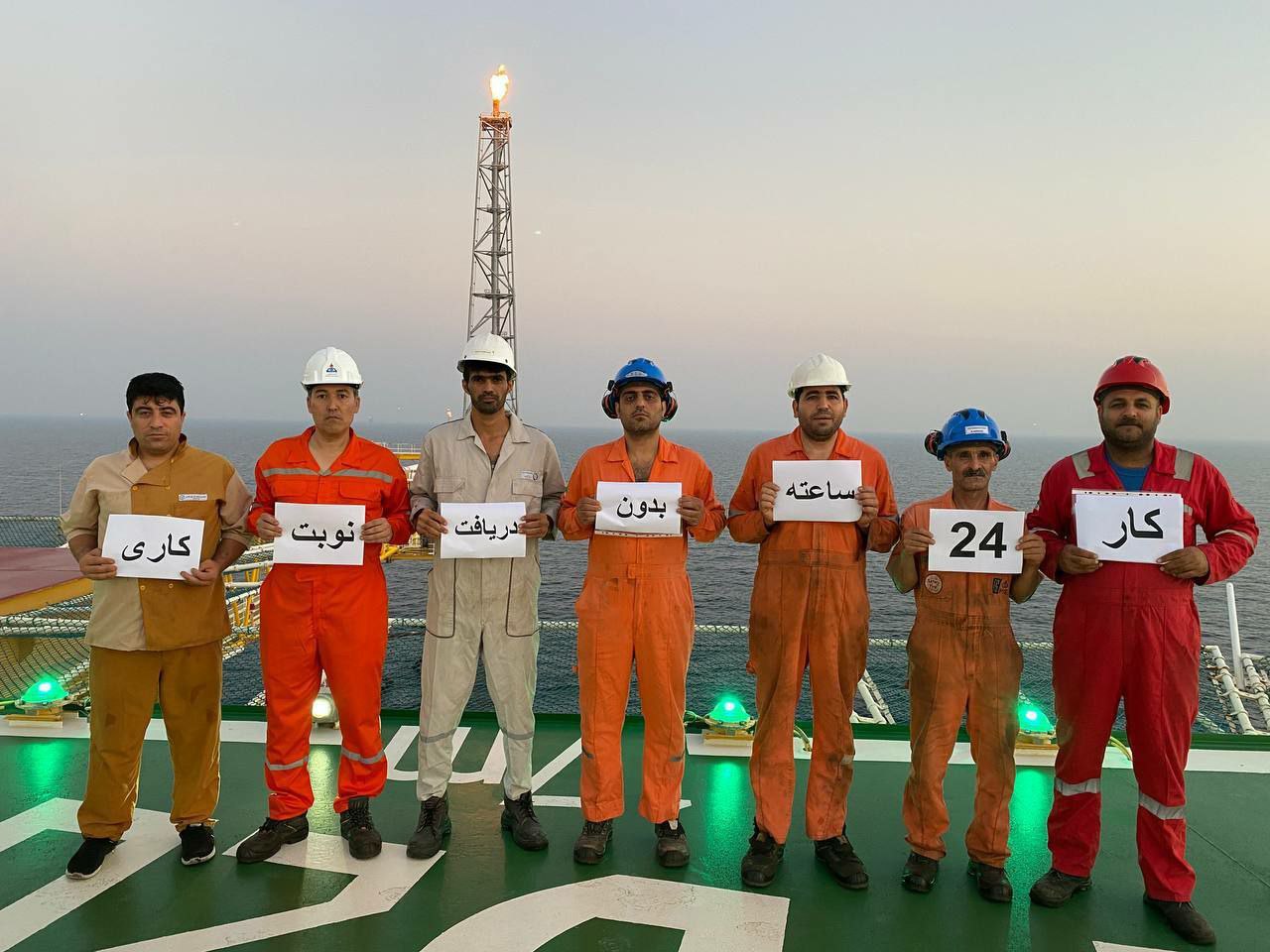The annual report by the Iran Labour Confederation– Abroad spans 56 pages and presents a harrowing account of the state of laborers, wage earners, and protest movements in Iran throughout 2024. This is not just a document but a mirror held up to a society drowning in economic and social crises. It lays bare the relentless violation of labor rights and the systematic suppression of collective action.
In 2024, there were at least 2,396 protests and 169 strikes across different sectors. These acts of defiance, unfolding in 31 provinces and 70 cities, painted a grim portrait of economic despair and managerial decay. The voices rising from the oil, gas, and petrochemical industries to those of retirees, teachers, nurses, and municipal workers spoke a single truth: survival in Iran is under siege. Add to this the arrests, imprisonment, and even death sentences meted out to labor activists, and you have a landscape of resistance carved out of desperation.
The demands were simple, almost painfully so: wages above the poverty line, the payment of delayed salaries, the elimination of exploitative contracting firms, enforcement of existing labor laws, fair pay structures, and access to adequate healthcare and insurance. Yet these pleas were met not with justice but with brute force. Union organizers faced mass dismissals, lengthy prison terms, and threats that made it clear the regime’s tolerance for dissent was nonexistent. The suicides driven by financial despair and the brutal assaults by security forces offered a chilling testament to the unbearable pressures placed on the working class.
Among the most telling examples of this year’s unrest were the nationwide strikes of project workers in the oil and gas sectors. With over 85 incidents in certain months, these strikes exposed a critical fault line in Iran’s economy. Meanwhile, retirees, crushed by inflation and meager pensions, staged the highest number of protests—a stark reminder that even life after decades of labor holds no promise of dignity.
This report, constrained by media censorship and security crackdowns, relies on information gleaned from independent labor organizations and verified accounts. Yet even within these limitations, it underscores a bitter truth: the absence of independent unions and free press is a gaping wound in Iran’s labor landscape.
Two appendices deepen the analysis. The first dissects Iran’s violations of International Labour Organization conventions and its own labor laws. It highlights how the regime’s policies undermine safety standards, block unionization efforts, and dismiss workers’ basic rights. The second turns to the most vulnerable: women, migrants, disabled individuals, porters, fuel carriers, and LGBTQ+ workers. These groups endure the harshest exploitation. Women face wage discrimination and staggering unemployment, while Afghan migrants work in grueling conditions without legal or insurance protections. Porters risk their lives for meager pay, their existence framed by exploitation and indifference.

The report concludes on a poignant note: despite relentless repression, Iran’s labor movement continues to resist. It is a defiance that echoes beyond the nation’s borders, challenging the silence of those who claim to champion justice.
Yet solidarity is a word too often hollowed out by hypocrisy. Western progressives, in their comfortable detachment, limit their critiques to the imperial policies of their own governments. The answer lies in a dangerous romanticization of anti-imperialism, detached from the realities on the ground. For these leftists, solidarity ends where it becomes inconvenient. They are quick to condemn U.S. sanctions but turn a blind eye to the systemic exploitation, corruption, and violence perpetuated by the Islamic regime. In their desperation to oppose Western hegemony, they adopt a rhetoric that legitimizes authoritarianism under the guise of “resistance.”
They close their eyes to fascism draped in resistance when it suits their narratives. In their selective vision, authoritarian states like the Islamic Republic—oppressive to their core—become symbols of struggle against Western hegemony. But solidarity that ignores the lived realities of the oppressed is not solidarity at all. It is complicity.










